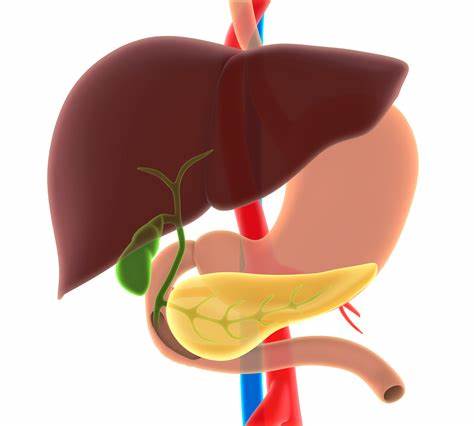Hepatobiliary and pancreatic diseases generally refer to diseases originating from the liver system, biliary system, and pancreatic system, and can occur in all ages.
The hepatobiliary and pancreatic systems undertake important and complex physiological functions of the human body. The causes of various diseases are different. Possible causes include bacterial infection, viral infection, parasitic infection, physiological malformation, tumor, etc.
Common Types of Hepatobiliary and Pancreatic Diseases
- Common liver diseases include bacterial liver abscess, amoebic liver abscess, liver cyst, benign liver tumors, liver malignant tumors, and liver metastatic tumors.
- Common diseases of the biliary tract include congenital biliary atresia, congenital bile duct ectasia, intrahepatic (external) bile duct stones, acute suppurative obstructive cholangitis, primary sclerosing cholangitis, biliary ascariasis, cholangiocarcinoma, and periampullary Cancer etc.
- Common gallbladder diseases include acute (chronic) cholecystitis, gallbladder stones, gallbladder polyps, gallbladder adenoma, gallbladder cancer, etc.
- Common pancreatic diseases include acute (chronic) pancreatitis, pancreatic cystic disease, pancreatic cancer, pancreatic neuroendocrine tumors, etc.
Symptoms of Hepatobiliary and Pancreatic Diseases
Viral diseases: According to the cause, they can be divided into hepatitis A, hepatitis B, hepatitis C, hepatitis D, and hepatitis E. Clinical classification includes acute phase, severe hepatitis, and chronic phase.
- Hepatitis A and Hepatitis E have an acute onset, with symptoms such as fever, chills, abdominal pain, nausea, and other symptoms common in the early stage of the disease. Hepatitis B and Hepatitis C viruses can cause acute hepatitis, chronic hepatitis, and asymptomatic carriers after infecting the human body. Symptoms in the acute phase include fatigue, anorexia, dark urine, pain in the liver area, etc. Chronic hepatitis and asymptomatic carriers mostly present with non-specific symptoms, such as fatigue, abdominal distension, dull pain in the right upper quadrant, and reduced energy for studying or working.
Infectious diseases: liver abscess, acute (chronic) cholecystitis, cholangitis, acute (chronic) pancreatitis, etc. The clinical manifestations vary depending on the site of infection.
- Typical symptoms of liver abscess are chills, high fever, pain in the liver area, and hepatomegaly. The body temperature can often reach as high as about 40°C, accompanied by nausea, vomiting, lack of appetite, and general weakness.
Benign tumor diseases: including liver cysts, liver adenomas, liver hemangiomas, liver focal nodular hyperplasia, gallbladder polyps, gallbladder adenomas, pancreatic cyst tumors, etc. Most of these diseases cause no obvious discomfort and are often discovered during physical examination. If the mass is too large or bile duct compression and stenosis occurs, jaundice will appear. In addition, pancreatic cysts require active attention because many cystic tumors have the risk of malignant transformation.
Malignant neoplastic diseases: include hepatocellular carcinoma, liver sarcoma, metastatic liver cancer, intrahepatic (extrahepatic) cholangiocarcinoma, gallbladder cancer, pancreatic cancer, etc. Malignant tumors of the hepatobiliary and pancreatic systems lack typical clinical manifestations in the early stages. When patients spontaneously seek medical treatment due to symptoms of discomfort, the disease has mostly entered the middle and late stages. Clinical manifestations may include pain in the liver area, hepatomegaly or palpable masses in the upper abdomen, fatigue, weight loss, and loss of appetite. systemic and gastrointestinal symptoms such as hypotension, jaundice, and abdominal distension.
Immune and endocrine diseases: including autoimmune liver disease, primary biliary cholangitis, primary sclerosing cholangitis, and pancreatic neuroendocrine tumors. The clinical manifestations of this type of disease are complex. There are usually no obvious symptoms in the early stage. As the disease progresses, symptoms such as fatigue, abdominal distension, lack of appetite, itching, and jaundice may appear.
Congenital developmental abnormalities: including biliary atresia and congenital bile duct dilatation. These diseases are more common in children, and the most typical clinical manifestation is jaundice.
Common Causes of Hepatobiliary and Pancreatic Diseases
Viral diseases: Most are caused by hepatotropic virus infection and are contagious.
Stone disease: The causes of biliary stones are very complex and related to a variety of factors. Any factors that affect the ratio of cholesterol to bile acid phospholipids and cause cholestasis can lead to stone formation, biliary infection, biliary parasites (roundworms, clonorchid sinensis) Flukes), bile duct anatomical variations, malnutrition, etc. can also lead to the formation of biliary stones.
Benign tumor diseases: The causes of benign tumor diseases of the liver and gallbladder are unknown and are caused by both own and environmental factors. Most of them can be cured after regular treatment.
Malignant neoplastic diseases: The causes of hepatobiliary and pancreatic malignant tumors are complex.
The incidence of hepatocellular carcinoma is related to cirrhosis, viral hepatitis, aflatoxin, certain chemical carcinogens, water and soil, and other factors.
Immune and endocrine diseases: Genetic susceptibility is the main factor in autoimmune liver disease. The imbalance in the number and function of regulatory T cells caused by viral infection, drugs, and environmental factors is one of the main mechanisms of immune disorders in patients.
Congenital developmental abnormalities: Developmental abnormalities during the embryonic period are the main causes of congenital diseases of the extrahepatic and extrahepatic bile ducts and cystic ducts.
Daily Advice for Patients with Hepatobiliary and Pancreatic Diseases
- Exercise appropriately every day to prevent obesity.
- Maintain a regular life and diet to prevent and treat constipation.
- Maintain 7 to 8 hours of sleep so that the liver, gallbladder, and pancreas can get adequate rest.
- Drink alcohol in moderation or limit alcoholic beverages entirely.
- Increase dietary fiber intake and avoid high-sugar and high-fat diets.
- Smokers had better quit smoking.
Conclusion
The treatment options for diseases caused by different causes are different. For details, please refer to each specific disease. Generally speaking, most benign hepatobiliary and pancreatic diseases can achieve good results with active and formal treatment, and some malignant tumor diseases can also prolong survival time through systemic standardized treatment.



